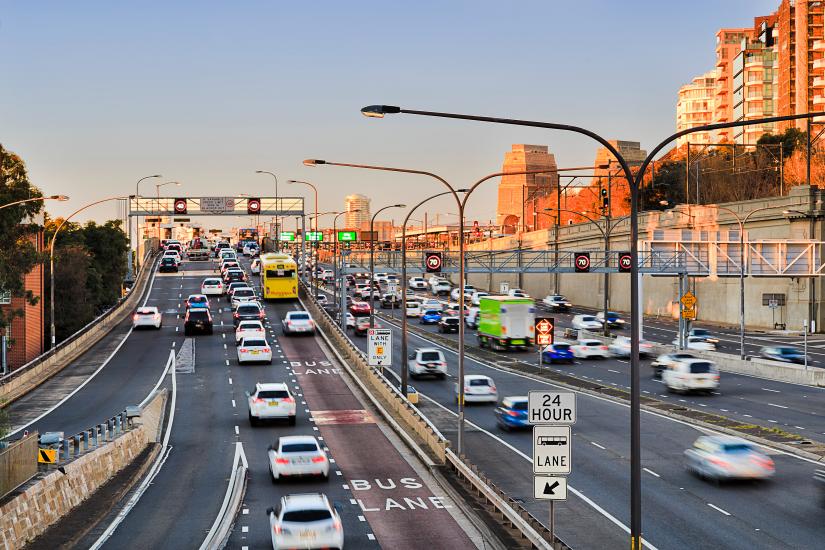Dr Ian Stevenson explores the rise of electric vehicles, and the opportunity this offers to reshape our urban soundscape, in the latest 2SER Think: Sustainability podcast.

Image: Adobe Stock
Noise is killing us… literally. However, the rise of electric vehicles presents a unique opportunity to reshape our urban soundscape. As the roar of petrol and diesel engines fades, we can reimagine how a beautiful city might sound.
The World Health Organisation identifies noise pollution as a significant public health issue, linking it to adverse effects such as sleep disruption, cardiovascular diseases, stress and mental health problems, hearing loss and reduced quality of life.
Dr Ian Stevenson, a Senior Lecturer in music and sound design at the University of Technology Sydney (UTS), discusses his research into audio design, urban soundscapes and noise pollution in the latest 2SER Think Sustainability podcast.
“Noise pollution and other forms of pollution caused by industrialisation have a measurable impact on the health and wellbeing of the population. They also have a measurable impact on the health and wellbeing of the other species in the environment,” he says.
“Where we choose to place noise producing infrastructure needs to be thought through carefully, and we will have a lot more control over that in the future, particularly as internal combustion engines disappear,” he says.
Noise pollution and other forms of pollution caused by industrialisation have a measurable impact on the health and wellbeing of the population.
Dr Stevenson says the "acoustic niche hypothesis", which proposes that animals such as birds or insects occupy a unique frequency bandwidth in an ecosystem to avoid competing with other animals, can inform the design of urban soundscapes.
“Like all ecosystems, each creature or species finds its niche, and if something new comes along and makes a whole bunch of noise, then it disrupts that, and things go out of whack. Some of them go hungry, or some of them can't find mates,” says presenter Lawrence Bull.
“They have found that birds, when there's traffic, are a lot louder to match it. I don't think we understand the extent of the damage we've done to the acoustic environment,” he says.
Electric vehicles in Australian may soon be required to produce a sound or “acoustic alert” to avoid accidents with pedestrians. The design of those sounds needs careful consideration and should be informed by ecological thinking, says Dr Stevenson.
“Electronic sounds can be anything you like, and I think Tesla has had a few goes at creating some sounds that perhaps not appropriate. From an ecological perspective, we would look at the properties of the vehicle and try to create sounds that matched those properties,” he says.
Dr Stevenson suggests using a niche approach, where different sounds are used for different types of vehicles and situations, with the potential to use sounds from the natural environment.
He also suggests the development of a standardised vocabulary of sounds that can be associated with different types of vehicles, rather than allowing for fully customisable sounds.
“Different sounds have different meanings for different communities, and so a sound that may be very annoying in a given cultural context may be absolutely acceptable in another context,” says Dr Stevenson.
Another consideration is the appropriate volume and frequency range for electric vehicle sounds to ensure pedestrian safety at low speeds, while considering the transition to tyre and wind noise at higher speeds.
While we often focus on visual aesthetics, it’s the auditory landscape that we should pay attention to if we want to improve our environment, says Dr Stevenson. Listen carefully, be aware of your sound environment, tune up your ears.
“If you adjust your attitude to a sound, you can come to find the beauty in all sorts of sounds.”

